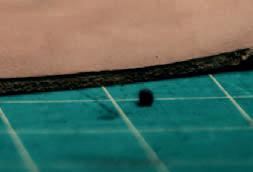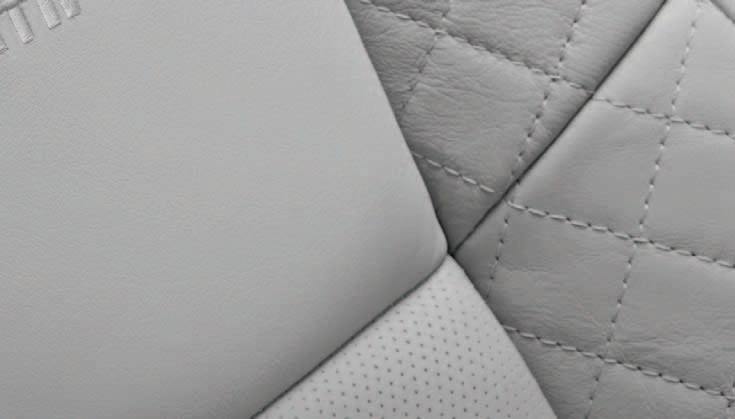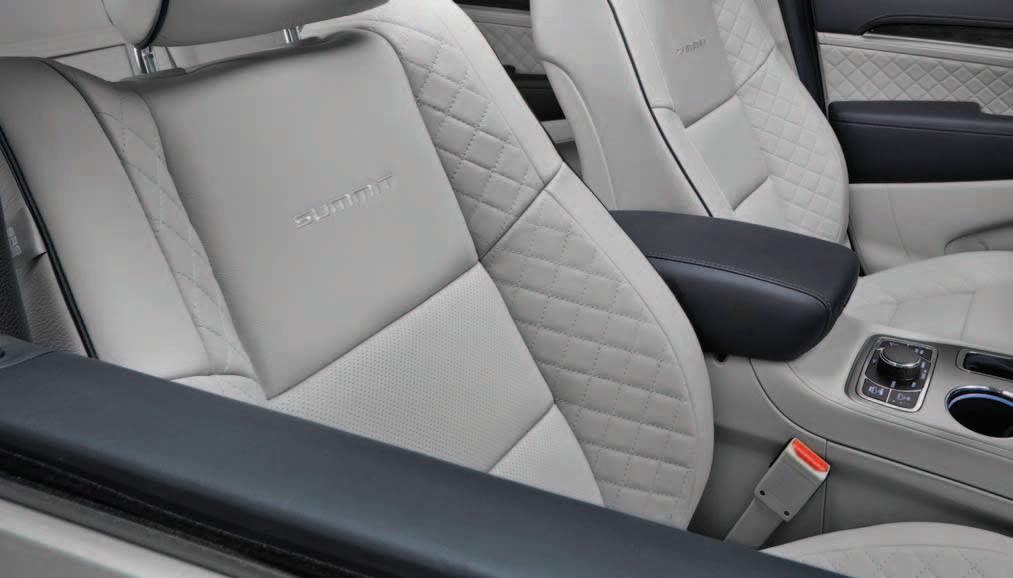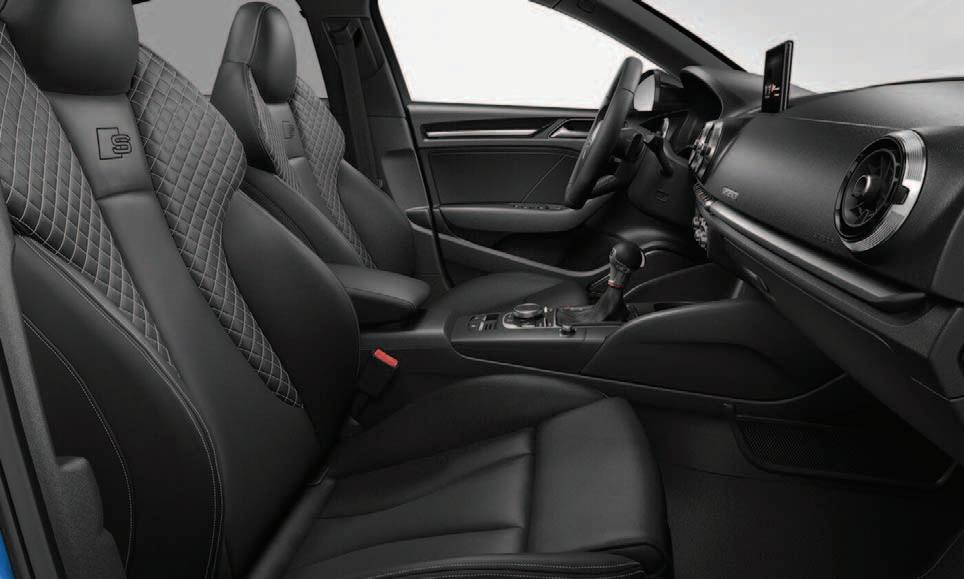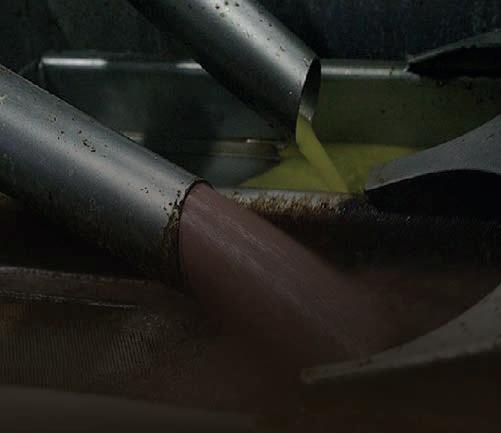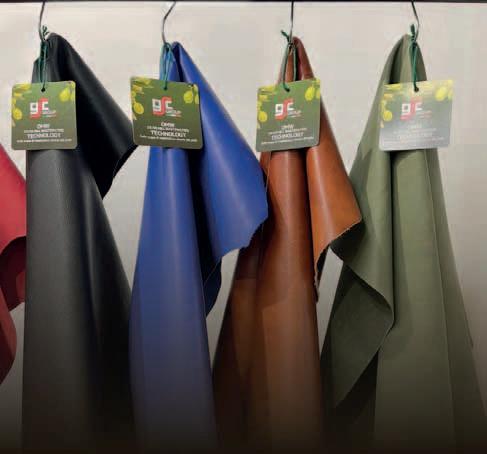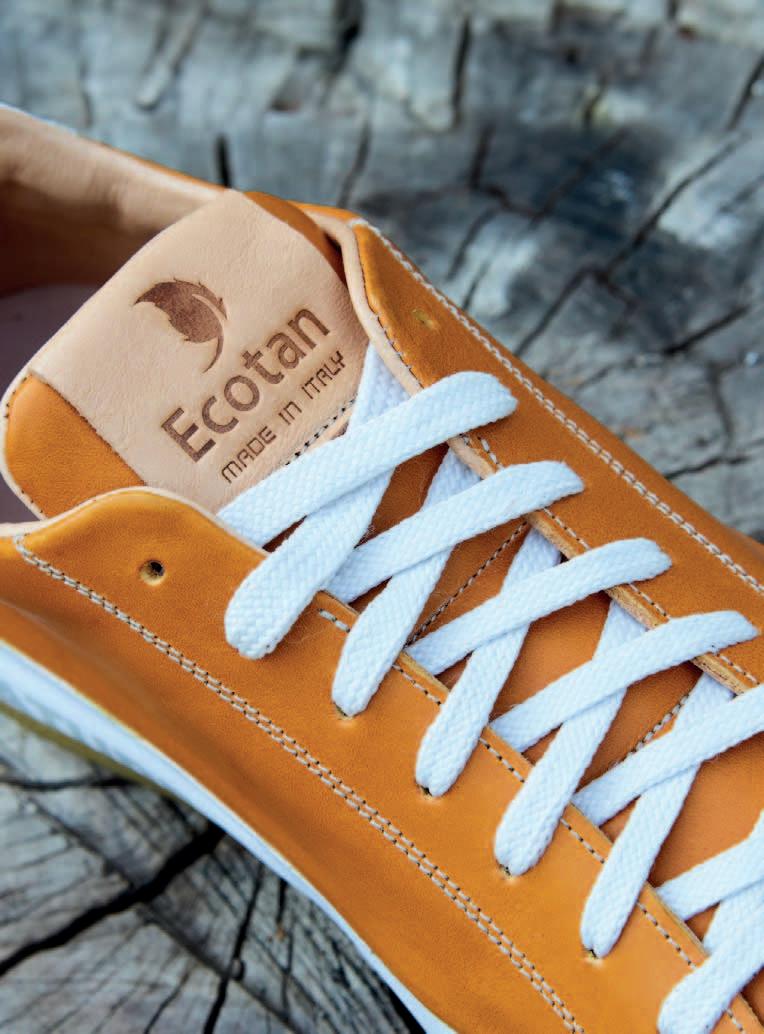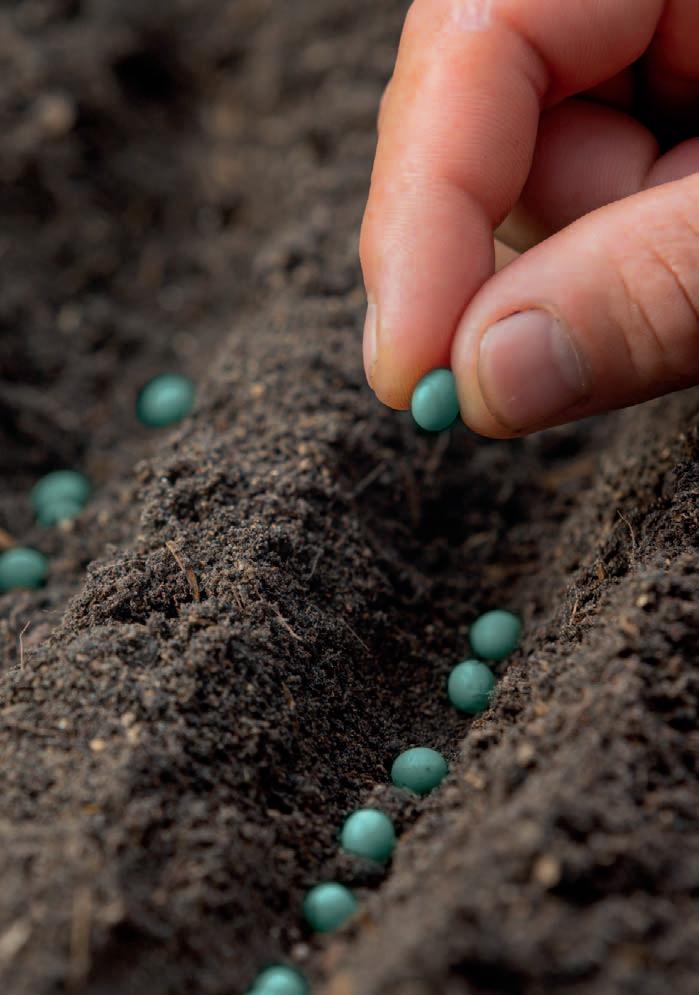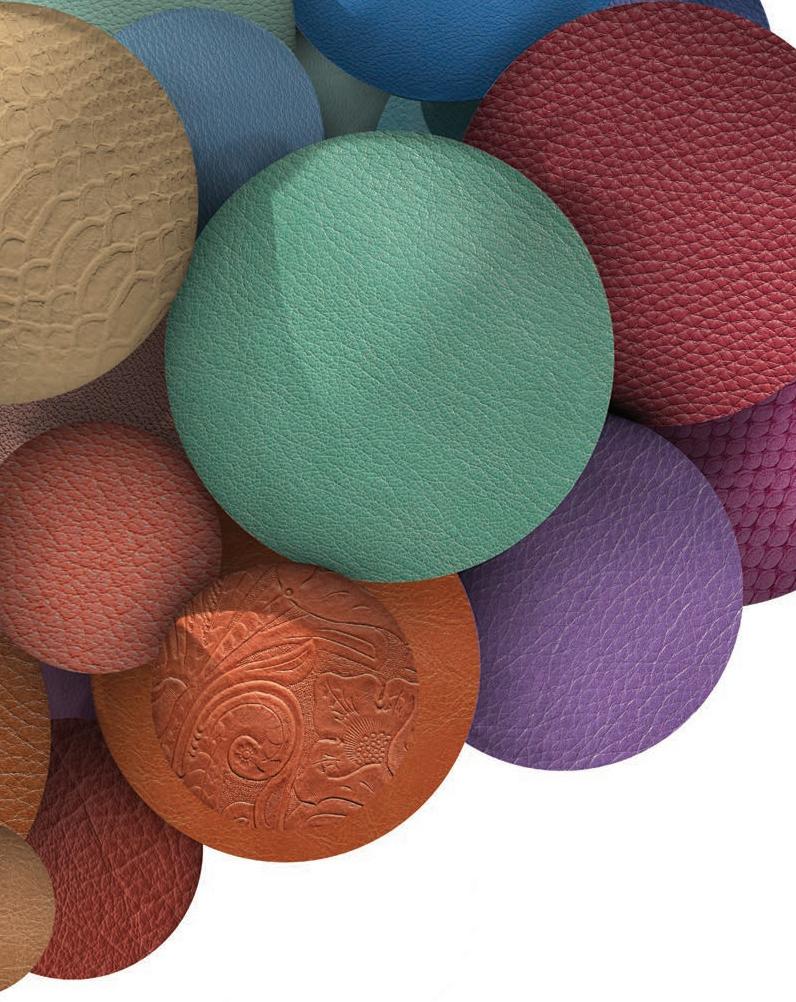Excellent –Bisphenol optimized syntans to achieve high leather quality
has any major interest in changing the status quo. Of course, this also means that in whatever way the markets have found an equilibrium. We still dare to doubt whether the physical amount of supply and demand is also in equilibrium, but for some time now the reflex to provoke the equilibrium with price changes has declined sharply. This will certainly not continue to be the case for ever, but it may well take some time before there are large shifts again.
There is also little real news to report from the market for the splits. More and more producers of collagen and gelatine are feeling the pressure to fill their factories and, on the other hand, they see the prices for their finished products crumbling further. It can be assumed that the multinationals that exist in this sector are currently thinking very carefully about how to deal with this situation in various locations. Otherwise, the demand for leather production is still relatively good. Price is still a problem, which means that weeks with more active demand always calm down quickly when higher prices are demanded as a result.
We can save ourselves the trouble of looking at the sheepskin market. Nothing has really changed in the situation there. There are niches and specialties that continue to find their way into the leather sector. We are seeing more leather jackets again this winter season and in fact there are also one or two brands that are offering double-face clothing again. But all this is of such limited volume that it cannot really stimulate the demand for skins. This market has already been destroying a large volume of raw material for some time. What a shame.
In Asia, the relatively early Lunar New Year (January 29) is casting its shadow on raw material deliveries. In Europe, there are only a few weeks left until the Christmas break, and since the order books are not overly full, you do not feel much of the Christmas stress that was so often cited in the past. Occasionally, leather factories report slightly better orders with faster delivery times, which indicates that one or other retailer may have reduced their inventories a little too far. This is good, as it means a small improvement in sales for some businesses for the year that is coming to an end.
US PERSPECTIVE
Sales of cured cattle hides for the period ending November 7 were 335,500 pieces. The figure for exports of wet blue was 88,500 pieces.
The most recent reports on hide prices showed butt-branded steers weighing 64-66 pounds up again at $28 per piece, and heavy Texas steers weighing 60-62 still at $17 per piece.
As they have for many weeks now, cow hide prices remained at $14 for northern dairy cows, $13.50 for south-west dairy cows, $7 for northern branded cows and $6.50 for southwest branded cows, with weights of 50-52 pounds in each case.
The source of all these figures is the US Department of Agriculture. Please note that the prices quoted represent ‘ballpark’ figures.
Cattle markets USA
Packers are entering the week with light inventories, but next week will be a holiday-shortened week for Thanksgiving (November 28). Surprisingly, show lists were smaller this week despite small sales volumes. Processors will likely increase the slaughter volume this week in anticipation of smaller volumes in Thanksgiving week. The balance between buyers and sellers of fed supplies is not burdensome; so much rests with the tone of the market as expressed in the futures trading and box price direction.
The value of the dollar has been rising in relation to other world currencies. The value of the dollar has a direct bearing on the cost of our beef to foreign buyers and the recent jump has increased the cost of our exported beef and at the same time made imported beef cheaper. Beef exports this year remain slightly below last year’s but have been strong relative to the high price. Beef imports have risen 20% as the value of our ground beef remains the bulwark of beef sales.
The choice cut-out remains above last year’s although the cut-out has lost $15 in recent trading. The fed-cattle portion of the weekly slaughter continues to make up a larger percentage of the total slaughter than in prior years, with slaughter of dairy and beef cows in decline.
Rainy weather slowed movement of cattle to market and many auction markets reported light receipts. The rains may have slowed receipts in many areas but the rains jumpstarted prices for light cattle. This follows a heavy feedlot placement month in October when winter grazing conditions were uncertain. Many two-way cattle were placed on feed. The recent rains in the wheat belt will slow feedyard placements and delay placement of many lighter weights until spring. Light weight calves have jumped $20-$30 per hundredweight.
The mix of calf sales by sex is undergoing a modest change, reflecting some evidence of heifer retention for breeding. The increase in breeding stock occurs from retained heifers by breeders and also by purchased heifers for breeding by those interested in increasing breeders for resale. The decline of crop prices during the past year will encourage more switching to cattle for optimum revenue generation.
The drought monitor continues to favour herd expansion, but the rains never fall evenly across all regions. Broad areas of the plains have received welcomed moisture. Many grazing areas will still have time following the rains to see additional growth on the wheat fields. Grazing opportunities have a major impact on feedlot placements but the pool of cattle available for both grazing and feeding continues to decline.
Corn prices were weak in overnight trading to open the week. There is much uncertainty
Actual Slaughter Under Federal Inspection
about trade policy under the new administration. The early tough talk on tariffs may be posturing or may be real. Corn basis levels in Guymon, Oklahoma, are at $1.05, basis the December contract.
GERMAN PERSPECTIVE
This week: The end of the year is slowly approaching and questions about interruptions of shipments to Asia owing to the holidays are taking up more and more
space. This means less attention is paid to the raw material market and the purchase and sale of hides and skins. One is more and more concerned with logistics, planning, payment and with the question of how to assess the development of the next few months.
Here and there, an order for the delivery of leather comes, often to be fulfilled at relatively short notice. However, these are not for large quantities of for standard products that would enable ongoing smooth production. Rather,
LATEST HIDE AND SKIN PRICES FROM GERMANY
they are gap-fillers and specialties that are to be delivered quickly before the end of the year.
The end of the year is already being felt very clearly in the automotive sector, and more and more of our customers are reporting sudden drops in customer call-offs. Considering that many companies are already planning inventories for the end of the fiscal year, this is not a big surprise. It is no longer a secret that the automotive industry in Europe is currently going through a very difficult time and the negative news is now coming in almost daily.
This also means that companies do not want to keep larger stocks of material, because according to everything we know today, production will not recover quickly even at the beginning of 2025. Planning uncertainty in this sector, which is still so heavily dependent on exports, is provided by the question of how US trade and customs policy will continue. There are also no impulses from the other European regions known for their leather production. The news remains rather negative. One has the feeling that many want to avoid conversations about the future.
This leaves only Asia at the moment and basically the firmer US dollar should help exports and business. However, it was also quite quiet there. As every week, selective requests come in and most of the time these are for heavier hides. Despite the firmer dollar, however, most talks fail in the end because of the price. Some colleagues report a demand for the standard cowhides, but we have to admit that we are not favoured by this at the moment.
This means that sales remained rather below average last week and were limited to individual deals for special and selected goods. Prices changed very little; in the end it was a decision whether to agree on a compromise or not.
The kill: Slaughter has now stabilised at the usual seasonal level. The quantities are not extraordinary, but they are absolutely what
you can expect for this time of year. Under normal conditions, there is nothing to prevent this from continuing at least until Christmas. If the weather temporarily becomes significantly colder again, then it could of course be that there will be weekly, short-term jumps in slaughter volumes again.
What we expect: At the risk of being considered unimaginative, we cannot see what could have a strong influence on market prices in the coming weeks. There is no great interest in significant price changes, and the approaching end of the year is certainly playing a significant role. Nevertheless, the day is coming when we will have to think about how demand and the situation in the leather industry is to continue. Europe remains the problem child. Sooner or later solutions will have to come, either from a significant revival in demand for leather or from a reduction in capacity.
LONG READ
Leather and the Circular Economy: Circular Stories
A careful path forward
New York-based accessories and footwear group Tapestry has an extensive programme in place to build a business case for circularity while celebrating and enhancing the sustainability of leather.
The parent company of Coach, Kate Spade and Stuart Weitzman, Tapestry, has made it clear that it views leather as an important part of its business strategy. When it published its 2023-2024 results, it explained that it intends to grow the leathergoods category at Coach and “strengthen core handbag foundation” at Kate Spade. Meanwhile, at Stuart Weitzman, leather has always been a fundamental component of its high-end women’s footwear collections and this brand, too, is now expanding into handbags, as well as footwear for men.
For a number of years now, the group’s annual consumption of leather has been in excess of 100 million square-feet. Whether its attempts to acquire rival group Capri Holdings succeed or not, it is planning to take increase its leather sourcing substantially in the near future. Tapestry is plotting its path towards this increased investment in leather carefully. A detailed plan is in place to help it integrate the positive elements of leather’s story (the material’s circularity, longevity, renewability, versatility and beauty) into the way it presents its brands and collections to consumers. At the same time, the group is using its influence and working hard to make the leather value chain even more sustainable.
It aims, for example, to have traceability of 95% of its materials by next year. It wants to source a proportion of hides from farms using regenerative agricultural practices and it is committed to helping its suppliers of leather make better use of the waste that accrues
from their operations. This is part of a broader focus on repair-and-recycle initiatives, all of which aim to enable companies that manufacture leather or leather products to make the maximum possible use of the material the industry processes. It had also set itself the goal of sourcing, by 2025, 97% of its leather from gold- or silver- rated Leather Working Group tanneries, but it achieved this ahead of schedule in 2023. Together, these ideas can help cement leather’s status as an ideal example of a material for the circular economy.
Baseline year
The group’s vice-president for sustainability, Logan Duran, gave a complete overview of these initiatives at Lineapelle in Milan in September 2024. A wide range of sustainability initiatives were already under way at Tapestry before this, but he marks 2021 as an important point in the road for the group. This was when it committed to making
the targets it was setting itself science-based. Using 2021 as a baseline year, it has committed to reducing greenhouse gas emissions by 64% for scopes one and two, which is to say emissions from its own facilities and from the energy those facilities consume, by 2030. The commitment also includes a 42% reduction of ‘non- FLAG’ scope-three emissions, again by 2030. FLAG stands for forestry, land and agriculture. Tapestry also has a separate target of reducing FLAG scope-three emissions by 30% by 2030, and an overall target of achieving net-zero greenhouse gas emissions across the value chain by 2050.
“We have seen some great progress already,” Mr Duran says. “We have achieved a 57% reduction for scopes one and two, helped by an adoption of around 80% of renewable energy in our stores, offices and fulfilment centres. Overall, our emissions are down since 2021, but over that time, our revenue has increased. We want to drive
reductions in scope three and we want to do that partly through material innovation. But we will not compromise on the quality of our products. There is no sense making ugly products that no one is going to buy.”
He believes leather from regenerative agriculture practices will be part of this innovation, but points to other examples too. Kate Spade, for instance, has products that use recycled nylon and polyester fibres. He is also very supportive of work that Coachtopia, a new sub-brand that Coach launched in 2023, has done so far. “Coachtopia had circularity built in from the start,” he says.
Keep products out of landfill
Before that, in the summer of 2021, Tapestry had already introduced Coach (Re)Loved. It set up an exchange platform in its retail stores inviting customers who no longer wanted to use Coach bags they had bought to hand them over for the company to “reimagine or recycle” the products. In return, customers taking part receive a credit
towards a new purchase. Tapestry describes the practice of fixing up pre- owned bags and selling them to new owners as ‘upcrafting’ and as an important means of keeping accessories it has produced out of landfill.
This has developed four distinct strands. Tapestry presents bags in the (Re)Loved programme as ‘Restored’ if they have undergone a repair at the hands of the inhouse craftspeople, or as ‘Upcrafted’ in the case of a reimagining of the original product. In cases of bags that are beyond repair, the in-house team recycles the components into a new product, labelled ‘Remade’. For particularly attractive pre-owned products, it is using the tag ‘Vintage’. Because of the popularity of vintage products among many consumers now, Tapestry team members have begun searching in flea markets and other likely locations to source and preserve products for this category. In-house craftspeople repaired 63,000 products in 2023 and placed 11,000 of them in the (Re)Loved programme.
Years of use
“Leather’s durability lends itself to all of this,” Logan Duran says. “And longevity reduces the annualised environmental impact over the lifetime of a product. Studies we have carried out with a team from Columbia University in New York suggest that we can assume our customers will use a new product for five years on average. If, after those five years, they have the product repaired, they can keep using it for another three years. People create lasting connections with products made from leather. Even ‘Remade’, when we take a product apart and make it into something new, leans into the intrinsic quality of leather.”
QUAKER COLOR A STEP AHEAD IN AUTOMOTIVE FINISHING
celebrating our heritage. We introduced new brand codes and signifiers that were unfamiliar to our customers. Our product was weighted to seasonal fashion with a niche aesthetic obscuring our more timeless core collections.
“As we pursued brand elevation, our pricing, particularly in leathergoods, did not always align with our category authority. Consequently, Burberry's offer was skewed to a narrow base of luxury customers.”
The Burberry Forward plan aims to “lead with outerwear”, “rebalance offer with fewer, bigger investments” and “align pricing with category authority”.
He has hired new leaders across marketing, merchandising and planning, and the Americas; introduced new ways of working to achieve “creative and commercial alchemy”; and initiated a cost savings programme to realise annualised savings of $40 million.
Third-quarter revenues fell 22% to £1.1 billion.
Supplying
Quaker Color is a division of McAdoo & Allen, with roots in the leather industry for over a century
Government ministers visit
Alliance France Cuir at Paris event
Leather industry body Alliance France Cuir has described its participation at the 2024 Made In France exhibition as a success. The event took place at the Porte de Versailles in Paris from November 8 -11.
Across the four days, Alliance France Cuir said it had been able to engage more than 1,000 visitors in meaningful conversations about the importance of the leather industry in France. Notably, two of the visitors were government ministers.
The secretary of state for consumer affairs, Laurence Garnier, was one of the visitors to Alliance France Cuir stand. The minister with responsibility for rural affairs and artisanship, Françoise Gatel, also spent time there.
Another member of the French parliament, Christophe Blanchet, and a member of the European parliament, François Kalfon, were also among the visitors.
Alliance France Cuir said afterwards that it had sought to put across as clearly as possible
to the politicians and to all visitors that the leather sector is of great importance to many communities across France.
It pointed out that 80% of the industry there is made up of small and medium-sized companies. It also said that the leather industry is “a major Made-In-France player”, creating jobs for 133,000 people and generating export revenues of €19 billion per year.
“We need support to be able to preserve our savoir-faire and to be able to keep manufacturing in France,” the organisation said.
Young consumers less attracted to luxury brands, Bain says Altagamma,
the association that promotes luxury brands producing in Italy, held the 2024 edition of its Observatory event in Milan on November 13.
This was the twenty-third edition of the event, which analyses the situation in the global luxury industry.
on research from analyst firm Bain & Company, is that the personal luxury goods market could finish 2024 with a fall in value of 2% year on year.
Bain said high-end consumers were reducing their spending and that younger consumers appear to be less attracted to luxury brands than previous generations.
“As the customer-base shrinks,” it said, “engaging top customers, who now have a growing share of luxury consumption, is more crucial than ever.”
C&A to eliminate leather products in 2025
Multinational
retail and fashion company
C&A has announced a new policy to eliminate the use of leather in its products by July 2025, as part of its "commitment to animal welfare".
One headline finding from the event, based
The decision, developed in collaboration with animal rights organisations, will see C&A cease the use of all types of leather, including full grain, top-grain, genuine, and bonded varieties sourced from bovine, goatskin, sheepskin, calf, and pigskin.
While it is widely acknowledged that around 99% of the global leather industry utilises byproducts from the meat and dairy sector, with no animals being slaughtered specifically for leather, C&A has opted to remove leather entirely from its supply chain.
Confusingly, the policy suggests the move aligns with the company's broader ethical stance, ensuring that no animal is killed solely for its products.
No damage at Valencia tanneries
Two tanneries in the Valencia region have confirmed that they have come through the devastating floods with little damage.
On November 11, Silvino Navarro Casanova, president of Dercosa and administrator of Incusa, said everyone at the two leather manufacturing companies was safe and well and that their facilities had suffered no damage.
He explained that there were “collateral problems” because the homes of a number of employees had been damaged and some had lost their cars in the floods. The floods began on October 29 and, according to the authorities, have caused 214 fatalities.
Bovine suede producer Dercosa has its tannery in Cheste, 30 kilometres west of the city of Valencia. This was one of the worstaffected areas. Grain leather manufacturer Incusa has its tannery in Silla, 15 kilometres south of the city.
Herd launches British Pasture collection
UK fashion brand Herd has launched a leathergoods collection using British Pasture Leather, which uses hides certified by regenerative farming organisation Pasture for Life and tanned in the UK.
Herd describes itself as having a “profound respect for the land and soil” and a “placebased materials-first approach”. Its knitwear uses Bluefaced Leicester wool, processed
within just 150 miles of the farms in Yorkshire.
The leathergoods collection of bags and belts has been designed by stylist Bay Garnett and is inspired by vintage designs.
The suede bags retail for £845.
At the start of November, British Pasture Leather co-founder Alice Robinson told BBC Radio 4 the leather industry would benefit from establishing clearer connections to the farming communities that produce the raw material.
New interiors workshop will open at Bentley in mid-2025
Automotive company Bentley Motors may be taking longer to become “a fully electrified car company”, but as it announced on November 7, it is still committed to making this transition.
It is giving itself an extra five years to do so, with 2035 now the target date.
At the time of the announcement, the company’s head of manufacturing, Andreas Lehe, confirmed that the company is training its production teams “for electrical readiness”. As part of this, Bentley is preparing to open a new interiors and trims workshop in mid-2025.
Mr Lehe said this new workshop will help the company increase customers’ options with regard to car interiors. He added: “Craftsmanship, leather and hand-stitching will always be part of Bentley’s unique selling point. Our job is to deliver customers’ dreams.”
FICE pays tribute to Europe’s reaction to Valencia disaster
The president of Spanish footwear federation FICE, Rosana Perán, has said colleagues from across Europe had been in touch immediately to offer sympathy and solidarity after the recent floods in Valencia and other parts of Spain.
An important footwear- and leathermanufacturing region, Valencia was hit by devastating floods at the end of October. By the end of the first week in November, the authorities had confirmed more than 200 fatalities with another 90 people still missing.
Speaking on regional television on November 4, Rosana Perán, who is also the current president of European footwear industry association CEC, said colleagues from national industry bodies across Europe had been in touch as soon as news of the disaster broke. She said they had offered sympathy and support.
Companies from the Valencia region and from other parts of Spain also offered help right away, donating footwear and money to help search-and-rescue operations. Ms Perán said FICE had worked closely with the Valencia region’s footwear industry association, Avecal, to work out the best way to send the most urgently needed material to the worstaffected areas.
Among the products most in demand in the aftermath of the floods were rubber boots. The FICE president said a manufacturer in Portugal had immediately sent more than 1,000 pairs and that local companies had
searched through their storage areas to collect as many pairs as they could from their stocks. “We all wanted to send what we could as quickly as possible,” Ms Perán said, “but we knew it was important to prioritise the things that are needed right now.”
She explained that footwear industry leaders were no different from everyone else in the region and pointed out that almost everyone had family and friends in some of the worst-affected areas.
In the case of her family company, Pikolinos, she said the manager of one its stores in the city of Valencia had been cut off at home for three days. The shop manager’s home is in Paiporta, a town on the outskirts of the city. More than 70 of the victims were from the town.
“Our hearts were in our mouths for those three days when we were unable to reach our colleague,” Ms Perán said. “When we go through to her, we found out that she had been cut off at home with her children and that they had run out of food and drinking water.”
It was early November before volunteers were allowed to make their way into Paiporta to help. But they were only able to do so on foot because many streets in the town were still flooded or covered in mud. “Two very brave members of the Pikolinos team went as soon as it was possible to do so,” Ms Perán said, “and were able to walk to our colleague’s house and give her food and other supplies.”
She said the people of the region had “a special DNA and a special charisma” and expressed confidence that they would be able to rebuild their communities and their lives.
All-electric Bentley target-date extended to 2035
Luxury automotive brand Bentley is delaying its switch to all-electric by five years.
Bentley began planning a strategy called Beyond100 in 2019, the centenary of the company’s launch, and introduced it in 2020. As part of Beyond100, it committed to becoming “a fully electrified car company by 2030”.
Now, though, it is relaunching the strategy as Beyond100+ and has said it will be 2035 before it goes fully electric.
Presenting an update on the strategy on November 7, chief executive, Dr Frank-Steffen Walliser, said that what the original strategy had achieved in four years had been impressive. Three of the company’s models, the Flying Spur Hybrid, Bentayga Hybrid and GTC Hybrid, are already available with hybrid powertrains.
The company’s first battery electric vehicle (BEV) will launch in 2026. It describes the car as a luxury urban SUV.
However, under the new Beyond100+ strategy, it will continue to plug-in hybrid electric vehicles and internal combustion engine vehicles at least until the mid-2030s.
Explaining the change in strategy, Dr Walliser said: “The automotive market looks different now.” He insisted Bentley remained committed to decarbonisation, but said that after “listening carefully to customers” it had
decided to push out its ‘fully electric’ pledge to 2035 and to continue to offer other models for at least the next ten years. He said this made for “a balanced portfolio”.
The chief executive said he was excited about the BEV model that will launch in 2026 and emphasised that the vehicle will offer a good mix of fast charging speeds and extensive driving range, although he said it was too early to give figures for these.
Dr Walliser said Bentley had seen “a dip in the market” for BEVs, but was sure demand for these vehicles would come back. He expressed hope that “a second wave” of demand might coincide with the launch of Bentley’s all-electric urban SUV in 2026.
Then he said: “We have to be honest. There is not a lot of demand among today’s Bentley customers for a BEV model. But there are new customers who want a modern version of a Bentley. Those new customers are the target for this launch, and we think we will convince existing customers too.”
Tax
credit
row could threaten Made In Italy
Leathergoods
and footwear manufacturers in Italy are threatening legal action in response to what they claim is an unfair demand from the government for back taxes.
The disagreement centres on tax relief that companies were able to claim between 2015 and 2019 on money they invested in research and development. The government at the time offered this incentive with a view to encouraging manufacturers to move towards Industry 4.0.
This was a term much in use at the time to describe the integration of advanced technology, including artificial intelligence, robotics and other forms of automation, into manufacturing practices.
Now the current government has said it wants companies to pay some of the money back, sparking protests from businesses that benefited and the threat of recourse to the courts.
The newly elected president of Confindustria Accessori Moda, the Italian fashion sector’s main representative body, Giovanna Ceolini, has said that asking companies now to return money that they say was confirmed as a tax credit “risks collapsing the whole of Made In Italy”.
Spain’s leather exports fall in value as imports of finished leather rise
Exports of leather from Spain in the first eight months of this year had a total value of €388 million. This represents a fall of 9.5% compared to the same months in 2023.
A breakdown of this year’s figures shows export values of € 269.7 million for finished leather, down by 5.9% year on year.
Semi-finished leather brought in export revenues of € 36.7 million, down by 33% compared to the January-August period last year.
Finally, shipments of raw hides from Spain brought in €81.6 million, down by 5.8%.
Italy was the top importer of each of the three categories of material.
Over the same eight-month period, Spanish manufacturers imported leather with a value of €280.5 million, also down compared to the previous year, in this case by 7.2%.
On their own, though, imports of finished leather were up, reaching €183.9 million, an increase of 4.5% year on year.
Imports of semi-finished leather fell by 21.5% to reach € 61 million, while imports into Spain of raw hides were down by 26.6% at €35.6 million.
Italy was the main source of finished and semi-finished leather, while France and Portugal were the main countries of origin of raw hides.
Italian teachers become students of leather
The Santa Croce-based Italian tanners association L’Associazione Conciatori has hosted the second edition of Tanning Orienteering – an initiative to help school
teachers learn more about tanning and leather so they can encourage students to enter the sector.
The project, supported by national tanning association UNIC with the support of the Tanners' Consortium of Ponte a Egola, highlights job opportunities and university courses related to leathergoods manufacture, in a bid to encourage new generations to enter the industry.
It builds on the Amici per la Pelle project, which introduces students to the sector through workshops and tannery tours. The students work with leather and present their projects at the Lineapelle leather fair in Milan.
The Tanners’ association was founded in Santa Croce sull’Arno in 1976 and it counts 150 tanneries in Santa Croce sull'Arno, Castelfranco di Sotto and Fucecchio as members.
Clearer connections to farming would help leather, designer claims
Leathergoods designer and leather supplier
Alice Robinson, has said the industry gains no benefit from being “inherently divorced from animal agriculture”. To address this, she has called for better connections between farms, abattoirs, tanneries, finished product manufacturers and the shoes, bags and other leather products brands offer consumers.
Speaking on a BBC radio programme on November 4, Ms Robinson, co-founder of traceable leather resource British Pasture Leather, retold the story of ‘Bullock 374’, a collection she designed in 2019 using the hide of a single animal, which she traced all the way along the supply chain. She wrote about this in a book called ‘Field, Fork, Fashion’.
During the radio discussion, she argued that the wider leather industry would benefit from establishing clearer connections to the farming communities that produce the raw material. She said that it had been of no benefit to the industry for leather to be “predicated on being an anonymous byproduct”.
She connected this anonymity with information that came out of a consumer survey that industry body Leather UK carried out in 2022. One of the findings was that many consumers had no idea that leather is a by-product of the food industry.
Ms Robinson went on to say that establishing the material’s connections to its origins more clearly would help emphasise that it is “inherently sustainable in terms of its durability, versatility and repairability”.
Giovanna Ceolini leads Italian fashion accessories federation
The Italian Federation for Fashion Accessories, Confindustria Accessori Moda, has elected Giovanna Ceolini as its new President. Claudia Sequi will serve alongside her as Vice President. This leadership change was unanimously approved by the Federation's assembly, which represents Italy’s footwear, leather goods, fur, and tanning industries.
Ms Ceolini, who founded Parabiago Collezioni srl in 1999, brings extensive experience to the role, having previously served as Vice President of Assocalzaturifici, where she focused on expanding Italy's footwear sector in Europe and the United States.
In her new position, she aims to strengthen the industry by advancing technical training, fostering connections with educational institutions, and supporting companies in adopting sustainable practices in line with European regulations. She also plans to promote Italian brands in strategic markets, including Korea, Kazakhstan, the USA, and Dubai.
Ms Ceolini expressed optimism about the future of Italy’s fashion accessory sector and gratitude to outgoing President Annarita Pilotti, who led the Federation during a challenging period.
ASIA
Sustainable leather project launches in Bangladesh
The Sustainable Leather Foundation (SLF) has initiated a project in collaboration with the University of Northampton, SERA Bangladesh, IdeaTree, and the University of Hertfordshire. The “Leathertrace Bangladesh TCLP” project is funded by the Sustainable Manufacturing and Environmental Pollution Programme (SMEP), supported by the UK’s Foreign, Commonwealth and Development Office (FCDO) and UN Trade and Development (UNCTAD).
The project aims to implement a digitised traceability system within Bangladesh's tannery and leather product manufacturing sector. This system is designed to facilitate a shift towards more sustainable practices by enhancing transparency, reducing environmental impact, and supporting compliance with international human rights
12 - 14 MARCH 2025
standards.
Bangladesh's leather industry is a key contributor to the national economy and a significant player in the global leather supply chain. However, the sector faces challenges related to environmental sustainability, such as waste management and the use of toxic chemicals, which have affected its international standing.
An inception event in Dhaka on November 14 will bring together policymakers and industry stakeholders to outline the project's goals and encourage collaboration. The initiative seeks to support the sector’s transition to more sustainable operations, in line with increasing global demand for environmentally responsible production.
Job cuts are part of Nissan’s response to ‘severe situation’
Automotive group has announced plans to reduce its global workforce by 9,000 people and to cut its global production capacity by 20%.
It announced these measures on publishing its results for the first half of its current financial year. In the six months to September 30, Nissan achieved consolidated net revenues of just under $40 billion, a fall of 11.7%.
Its operating profit from these figures reduced substantially, reaching just over $210 million, compared to an operating profit of almost $1.4 billion in the same period a year earlier.
It sold 1.6 million cars in the six-month period, down from almost 1.7 million in the same period last year.
The company said: “Facing a severe situation, Nissan is taking urgent measures to turn around its performance and create a leaner, more resilient business capable of swiftly adapting to changes in the market.”
New Burberry location in Beijing
Leathergoods brand Burberry has opened a new flagship in Beijing. It chose the Sanlitun district of the Chinese capital for the new store, describing the location as an iconic shopping destination.
Set across three floors, Burberry said the design of the new store was inspired by the architecture of its home city, London. It features oversized windows that flood the space with sunlight and natural stone inspired by British limestone. There is a staircase with a metal balustrade that is reminiscent of the cast iron railings found on many London streets.
Lear sees positives in China despite revenue dip
Car seats manufacturer Lear Corporation, the owner of US tannery Eagle Ottowa, has reported revenues of $5.6 billion in the third quarter, compared with $5.8 billion in the third quarter of last year.
The group reported growth in China, and signed new contracts with a premium European automaker and Hyundai.
Lear’s CEO, Ray Scott, said: “In China, the relationships we have built with key
customers are generating additional business wins. In Seating, we won several new awards with BYD, Xiaomi and Seres, and in E-Systems, we were awarded new business for multiple programs with the Dongfeng Group. While margins remain below our mid-term targets in each segment, we continue to make significant progress with the factors we control.
“I am confident that the innovative products we are developing, combined with the investments we are making in advanced manufacturing, will support revenue and earnings growth, strong cash flow generation and significant shareholder returns.”
The group operates 265 facilities in 38 countries.
Japan approval for methanereducing feed additive
Afeed
additive developed by animal nutrition group DSM- Firmenich for reducing enteric methane emissions from cattle has secured approval for distribution in Japan.
The product, Bovaer, is now available in more than 55 countries around the world, including Brazil, Australia, Canada and the states of the European Union.
DSM-Firmenich presents the product as a means of achieving a significant and immediate reduction in the environmental footprint of beef and dairy products. It says one-quarter of a teaspoon of Bovaer per day in an animal’s feed can take effect in 30 minutes and result in an average reduction of methane emissions of 45% in beef cattle and of 30% in dairy cattle.
A group senior vice-president with responsibility for Bovaer, Mark van Nieuwland, said that the product would support Japan’s national sustainability goals and support the Japanese dairy and beef sectors “in their quest to deliver on sustainability promises to their customers and consumers”.
He said implementing Bovaer at scale among the country’s 4 million beef and dairy cattle could help Japan lower its national methane emissions by more than 5%.
AMERICAS
Wolverine Worldwide launches new Innovation Hub Wolverine
World Wide, the parent company of Merrell, Saucony, Wolverine, and Sweaty Betty, has opened a new 11,000square-foot global Innovation Hub in downtown Boston. This facility will serve as a base for the company’s design and product teams, including members from Saucony’s design, development, and merchandising departments.
CEO Chris Hufnagel remarked, "Boston offers exceptional design and footwear talent. This new hub will enable us to drive innovation and further transform Wolverine Worldwide into a consumer-focused builder of global brands."
This opening is part of Wolverine’s recent global expansion, which includes new office
spaces in Zhuhai, China, and Hong Kong, as well as a relocated Sweaty Betty office in London. The company is also renovating its global headquarters in Michigan, with new spaces for Merrell and Saucony set to open by Spring 2025.
Proposed Tapestry-Capri merger permanently cancelled
New York-based accessory and footwear group Tapestry and Capri Holdings have agreed not to go ahead with a proposed merger.
Tapestry, whose brands are Coach, Stuart Weitzman and Kate Spade, announced in August 2023 that it wanted to acquire Capri Holdings, whose brands are are Versace, Michael Kors and Jimmy Choo. However, the Federal Trade Commission (FTC) the competition authorities in the US, moved to block the deal because, it said, it would be bad for consumers.
At a court hearing in late October, the FTC secured an injunction, stopping the merger from going ahead.
Initially, Tapestry said it would appeal the court’s decision, but has now concluded that it cannot complete this appeal successfully before its original offer for Capri Holdings expires on February 10.
Tapestry has agreed to reimburse expenses Capri Holdings has incurred in connection with the transaction. It said this amounted to approximately $45 million. It said it did not now foresee any acquisition in the near term and would instead concentrate on growing its three existing brands.
Double-digit growth continues for US wet blue exports
Packers,
tanners and traders in the US exported more than 19.75 million hides in the first nine months of 2024. These exports brought in revenues of $798 million.
Compared to the same period in 2023, total hide exports are down by 8.3% in volume and by almost 5.5% in value.
However, double-digit growth for wet blue exports has continued.
In the January-September period this year, the US exported more than 3.1 million wet blue hides, bringing in revenues of $305.8 million. These figures represent growth of 13% in volume and of 15% in value.
Vietnam’s imports of US wet blue for the year so far have reached almost 930,000 pieces, with a combined value of more than $100 million, increases of 67% and 71% respectively.
In the second-biggest market, China, imports reached volumes of nearly 710,000 wet blue hides from the US with a value of $67.5 million, up by 9% and 22% respectively.
Leather craft drives Ribeira’s prosperity
In Ribeira, a small community in north-east Brazil, unemployment is virtually nonexistent, thanks to the Arteza Cooperative of Tanners and Leather Artisans. Established in
1998, the cooperative now supports around 400 families, providing steady employment through leather production.
Arteza has significantly expanded since its early days, increasing production from 800 to 20,000 hides per month. The cooperative’s growth has boosted the local economy, leading to the development of new infrastructure, including a petrol station, shops, and a pharmacy.
A major factor in this success has been the installation of solar panels in 2018, which lowered energy costs and enabled the cooperative to increase production and improve product quality. Arteza uses natural materials for tanning, promoting sustainability in its operations.
In addition to its local sales, the cooperative has increased online sales, now accounting for up to 40% of revenue. Despite challenges such as the pandemic and rising raw material costs, the cooperative continues to thrive, contributing to the economic stability of the Ribeira community.
Tandy Leather faces challenging quarter
based retailer Tandy Leather Factory announced its financial results for the third fiscal quarter of 2024, showing a slight decline in revenue and profitability. The company reported revenues of $17.4 million, a decrease of 1.1% from $17.5 million in the same quarter of 2023. Gross margins fell to 57.8%, down from 62.4% last year, resulting in a gross profit of $10.0 million, compared to $10.9 million in Q3 2023.
The company posted an operating loss of $0.3 million, a decline from the operating income of $0.9 million in the same period last year. The net loss for the quarter was $0.1 million, down from a net income of $0.6 million in 2023. Operating expenses increased by 2.3%, largely due to inflationary pressures, particularly in employment costs.
Despite these challenges, Tandy Leather Factory ended the quarter with $10.1 million in cash and cash equivalents, up from $8.6 million a year earlier. Inventory stood at $38.1 million, slightly up from $38.0 million at the end of 2023.
CEO, Janet Carr, noted that although September sales were strong, overall customer spending on discretionary items remained weak, impacting traffic and financial performance.
Beef revenues and volume increase for Tyson, but profits fall Packer and leather group Tyson has reported revenues of $53.3 billion for its most recent business year, the 12 months ending September 28, 2024, an increase of 0.6% year on year.
Its beef business brought in almost $20.5 billion, which signifies growth of 4.4% compared to the figure for the previous year. Beef remained by far the biggest business segment for the group.
Tyson said the volume of beef it had produced also rose, increasing by 1.6%, but it
said profits from its beef operations were down. The group achieved most of its $1.4 billion in operating income from chicken and prepared foods.
It said it expected beef production to reduce in 2025; the US Department of Agriculture has projected a reduction of 2% in domestic beef production next year.
Position of strength, says Tapestry
US-based luxury Tapestry, owner of Coach, Kate Spade and Stuart Weitzman, has reported results for the fiscal first quarter ended September 28.
Revenues of $1.51 billion are flat with the same period last year but better than anticipated.
Joanne Crevoiserat, CEO of Tapestry, said: “We remain in a position of strength, with distinctive brands, an agile platform, and robust cash flow that provide us with strategic and financial flexibility to deliver accelerated organic growth and enhanced value creation in FY25 and for years to come.”
Stakeholder
initiatives must change, report says Fashion innovation platform Transformers Foundation has launched a new report called Collective Action Reimagined: A Call for Fair Process and Supplier Inclusion in Fashion’s Multi-Stakeholder Initiatives’.
It describes the report as an exploration of “the systemic barriers preventing meaningful supplier engagement in some of the industry’s most influential multi-stakeholder initiatives (MSIs).
Among the initiatives the report focuses on are Cascale (formerly the Sustainable Apparel Coalition), Textile Exchange, the Social and Labor Convergence Program (SLCP), and Zero Discharge of Hazardous Chemicals (ZDHC).
It compiled the report after a series of interviews with people it calls “key informants within the fashion supply chain”. It describes the interviewees as people who have in-depth first-hand experience and close knowledge of MSI supplier engagement.
The report says rules, governance and processes “often perpetuate supplier exclusion”. The organisations, though wellintentioned, often reinforce barriers that limit supplier participation, leading to what it calls “a cycle of distrust, disengagement, and ineffective sustainability strategies”.
It calls for the adoption of a ‘fair process’ model. This would be based on non-biased decision-making, equitable engagement and transparency. Transformers Foundation said its aim is to transform MSIs into “true platforms for collective action”.
Half-year results down at Capri,
but
Jimmy Choo holds its own
Accessories and footwear group Capri Holdings has reported revenues of just over $2.1 billion for the first half of its current business year, the six months to September 28. This represents a fall of 14.8% compared to the same period last year.
Revenues for its Michael Kors brand were $1.4 billion, while Versace brought in $420 million. These figures represent declines of 15.2% and 22% respectively. Sales for both accessories brands fell in all regions.
At Capri’s most prominent footwear brand, Jimmy Choo, total revenues for the half-year period were $313 million. This figure represents a slight decline, 0.6%, year on year, but Jimmy Choo sales in Europe went up by 7.2% to reach almost $150 million.
Wolverine charts path with ‘stronger platform’
Better-than-expected
sales of Merrell and Saucony boosted third-quarter revenues for parent group Wolverine World Wide, with CEO Chris Hufnagel describing the shake-ups of the past 18 months as “behind it”.
Despite this, revenues in the quarter totalled $440.2 million compared with $528 million in the corresponding period last year.
He said: “We drove another quarter of record gross margin and more than doubled earnings versus last year. Today, we’re moving forward with a stronger platform for growth – a rationalised portfolio of authentic brands positioned in attractive categories, a much healthier balance sheet with our restructuring and stabilisation efforts largely behind us, and a talented, aligned and motivated team.”
Inventory at the end of the quarter was $285.5 million, 50% lower than the prior year. Net debt at the end of the quarter was $563 million, down $373 million compared with the prior year.
The results exclude the impact of Keds, which was sold in February 2023, the US Wolverine Leathers business, which was sold in August 2023, the non-US Wolverine Leathers business, which was sold in December 2023, and the Sperry business, which was sold in January 2024.
North America appointment for Gruppo Mastrotto
Leather manufacturer Gruppo Mastrotto has appointed Carla Bluitt to the position of president of its business in North America. She took up the role in October.
Ms Bluitt has extensive experience of the leather business, having been business development manager of Crest Leather for almost seven years before leaving in March this year. She has also run her own consultancy business.
Gruppo Mastrotto North America is based in the furniture-making hub of High Point, North Carolina. Ms Bluitt said she was “excited about what is in store” for the new group’s new North American division and said she looked forward to becoming a valued supplier of leather to US furniture brands and manufacturers.
Former ICT president dies
Aformer president of the International Council of Tanners, Lisa Howlett, has died. Former colleagues said Ms Howlett had died on November 4 from complications following a recent surgical procedure.
She was a fifth-generation tanner and ran her family company, Auburn Leather, until 2018, when ISA TanTec integrated Auburn into the group.
Auburn Leather was established in Kentucky in 1863, specialising in leathergoods for the horse and buggy market before evolving into a producer of leather laces for footwear and sporting goods. Lisa Howlett continued working after the acquisition to help ISA TanTec continue to offer these products to customers. She decided to retire in 2021.
In 2013, she was elected chair of the Leather Industries of America, one of the component bodies that formed the Leather and Hide Council of America. She was elected as the first woman president of the International Council of Tanners in 2018 and stayed in the role until 2020.
AFRICA
US-Africa partnership boosts leather sustainability
At the African Sourcing and Fashion Week (ASFW) 2024 trade fair held in Addis Ababa from November 8-10, the Leather and Hide Council of America (LHCA) formalised a partnership with the Africa Leather and Leather Products Institute (ALLPI) to advance sustainable practices within the leather industry across Africa.
The collaboration was cemented through a Memorandum of Understanding (MOU), with the aim of promoting sustainable leather practices and supporting growth in the African leather sector. This initiative is supported by funding from the United States Department of Agriculture (USDA). The agreement outlines a series of initiatives to be jointly undertaken by LHCA and ALLPI, including trade missions, technical training, and the provision of resources for local industry stakeholders.
A key component of the partnership is the launch of the Real Leather. Stay Different. (RLSD) leather promotion campaign in Africa. This campaign, originally successful in other regions, will focus on increasing awareness of the benefits of leather as a sustainable and long-lasting material, aligning with global efforts to encourage responsible consumer choices.
Furthermore, the collaboration will facilitate knowledge exchange on sustainable leather production, enhancing the capacity of African producers to meet international standards. This is expected to boost trade opportunities between Africa and the United States, fostering stronger ties between the two regions' leather industries.
The MOU reflects a shared commitment to sustainability, aiming to create a positive impact on both economic development and environmental stewardship within the leather sector. By focusing on sustainable practices, the partnership seeks to support a more resilient and competitive leather industry in Africa, while also contributing to global sustainability goals.
This agreement marks a significant step forward in strengthening U.S.-Africa
cooperation in the leather sector, with both organisations expressing optimism for the future of leather production on the continent.
NILEST plans mini tanneries in every state
The Nigerian Institute of Leather and Science Technology (NILEST) has announced plans to establish mini tanneries across all 36 states to transform hides and skins into valuable leather products. This initiative, recently reported in local media, aims to revitalise Nigeria’s leather industry by introducing modern technology and infrastructure.
NILEST’s Director-General, Prof. Mohammed Yakubu, highlighted that leather is a significant national resource with the potential to generate foreign exchange and create jobs. He emphasised the need to reduce the consumption of hides as “Kpomo,” noting that existing tanneries cannot process the vast amounts of hides and skins produced.
The mini tanneries are expected to process
up to five tonnes of leather weekly, targeting both local and international markets. Experts estimate that Nigeria’s leather industry could generate over $1 billion annually in exports.
Leather shoe manufacturer opens in Addis
Gelila Manufacturing has started production of export-standard shoes and soles at Bole Lemi Industrial Park in Addis Ababa after a two billion Birr (£13 million) investment, according to the Ethiopian Herald. The company's production stands at 2,000 pairs of shoes per day but will rise to 4,000 pairs per day once it reaches capacity.
Alemayehu Seifu, deputy CEO of the Ethiopian Industrial Parks Development Corporation (IPDC), said: "This operation will not only generate foreign exchange but also create job opportunities and add value to the leather sector.”










